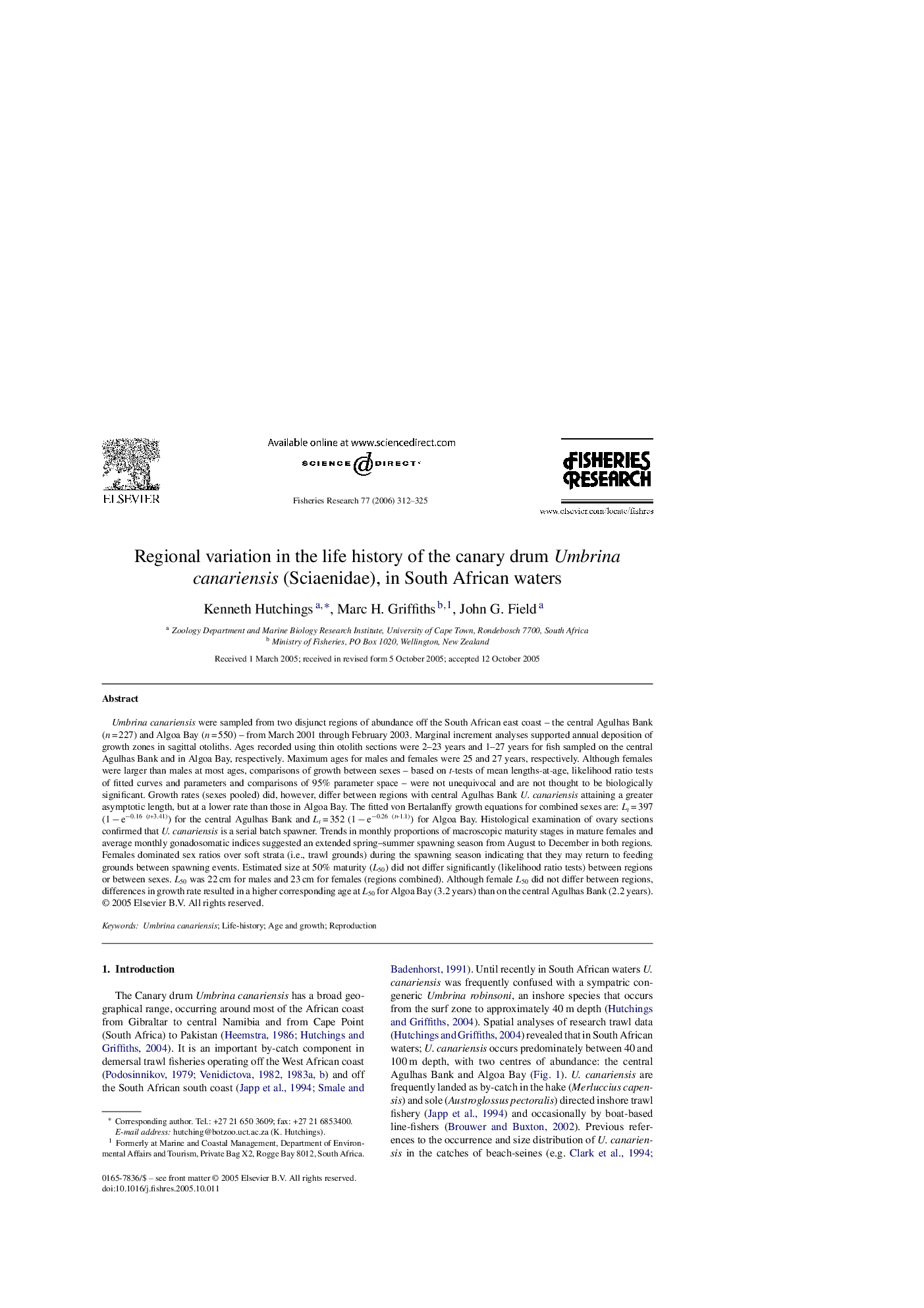| Article ID | Journal | Published Year | Pages | File Type |
|---|---|---|---|---|
| 4545049 | Fisheries Research | 2006 | 14 Pages |
Umbrina canariensis were sampled from two disjunct regions of abundance off the South African east coast – the central Agulhas Bank (n = 227) and Algoa Bay (n = 550) – from March 2001 through February 2003. Marginal increment analyses supported annual deposition of growth zones in sagittal otoliths. Ages recorded using thin otolith sections were 2–23 years and 1–27 years for fish sampled on the central Agulhas Bank and in Algoa Bay, respectively. Maximum ages for males and females were 25 and 27 years, respectively. Although females were larger than males at most ages, comparisons of growth between sexes – based on t-tests of mean lengths-at-age, likelihood ratio tests of fitted curves and parameters and comparisons of 95% parameter space – were not unequivocal and are not thought to be biologically significant. Growth rates (sexes pooled) did, however, differ between regions with central Agulhas Bank U. canariensis attaining a greater asymptotic length, but at a lower rate than those in Algoa Bay. The fitted von Bertalanffy growth equations for combined sexes are: Lt = 397 (1 − e−0.16(t+3.41)) for the central Agulhas Bank and Lt = 352 (1 − e−0.26(t+1.1)) for Algoa Bay. Histological examination of ovary sections confirmed that U. canariensis is a serial batch spawner. Trends in monthly proportions of macroscopic maturity stages in mature females and average monthly gonadosomatic indices suggested an extended spring–summer spawning season from August to December in both regions. Females dominated sex ratios over soft strata (i.e., trawl grounds) during the spawning season indicating that they may return to feeding grounds between spawning events. Estimated size at 50% maturity (L50) did not differ significantly (likelihood ratio tests) between regions or between sexes. L50 was 22 cm for males and 23 cm for females (regions combined). Although female L50 did not differ between regions, differences in growth rate resulted in a higher corresponding age at L50 for Algoa Bay (3.2 years) than on the central Agulhas Bank (2.2 years).
